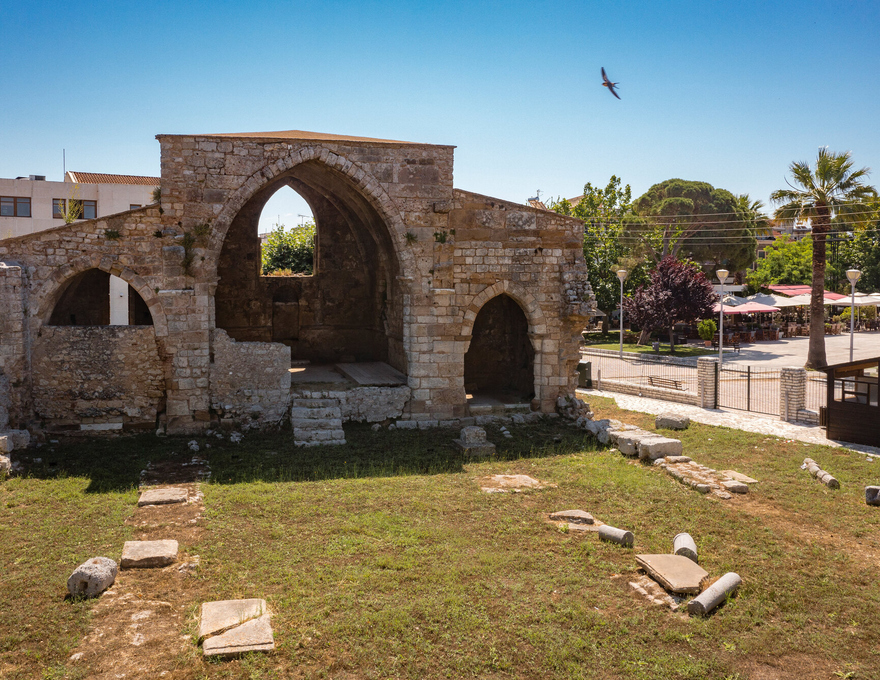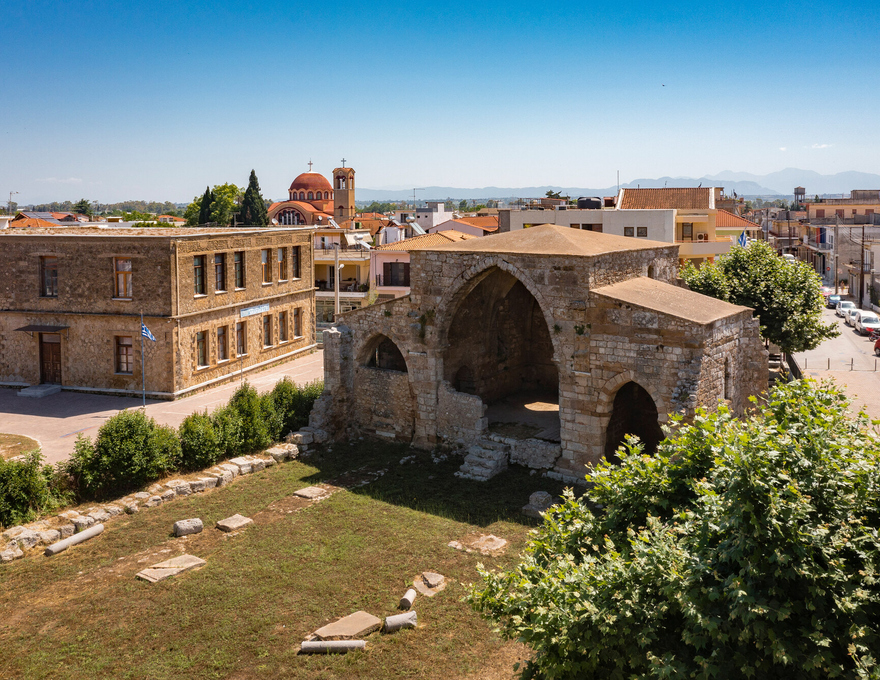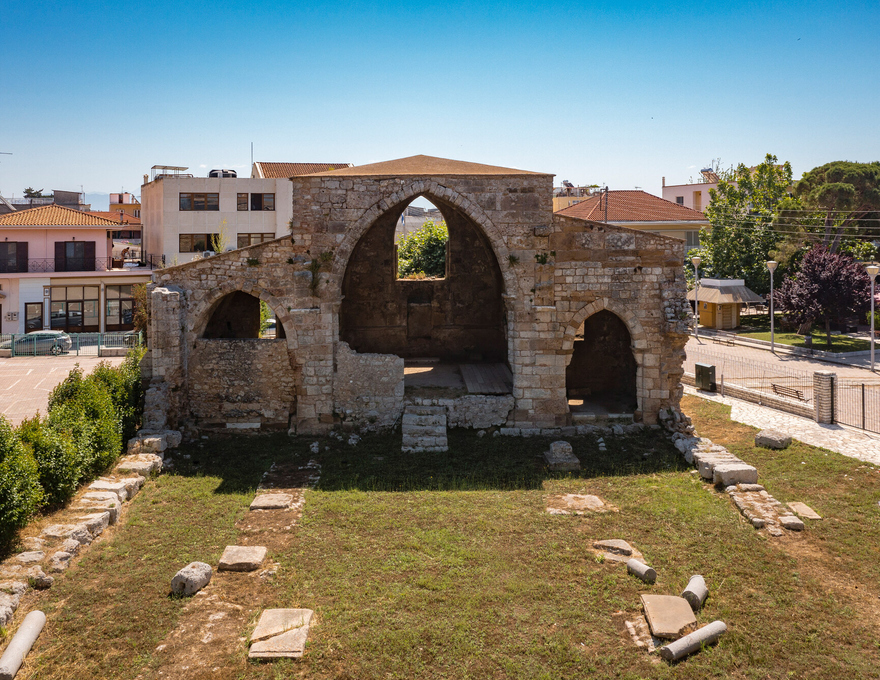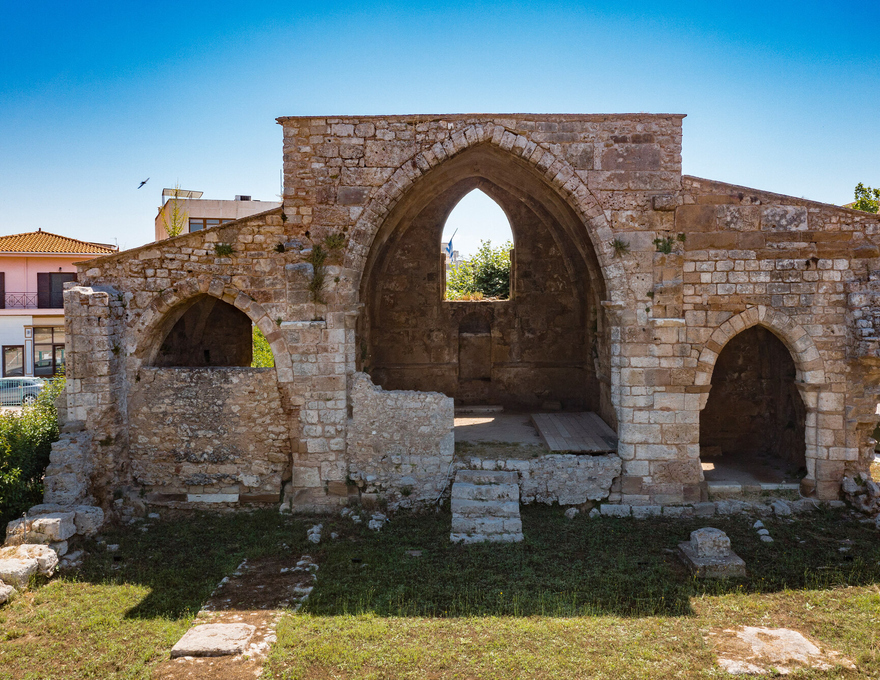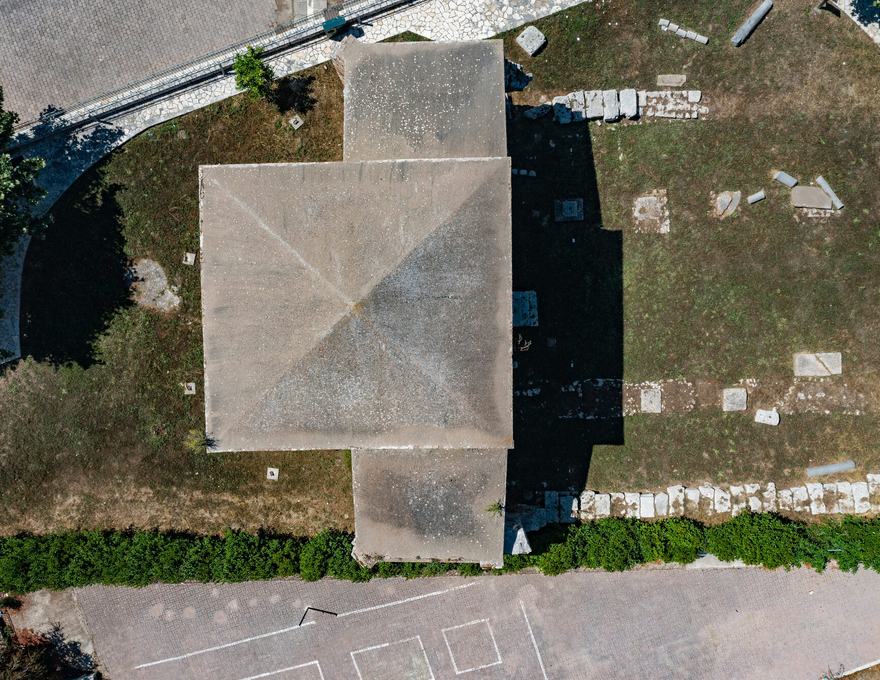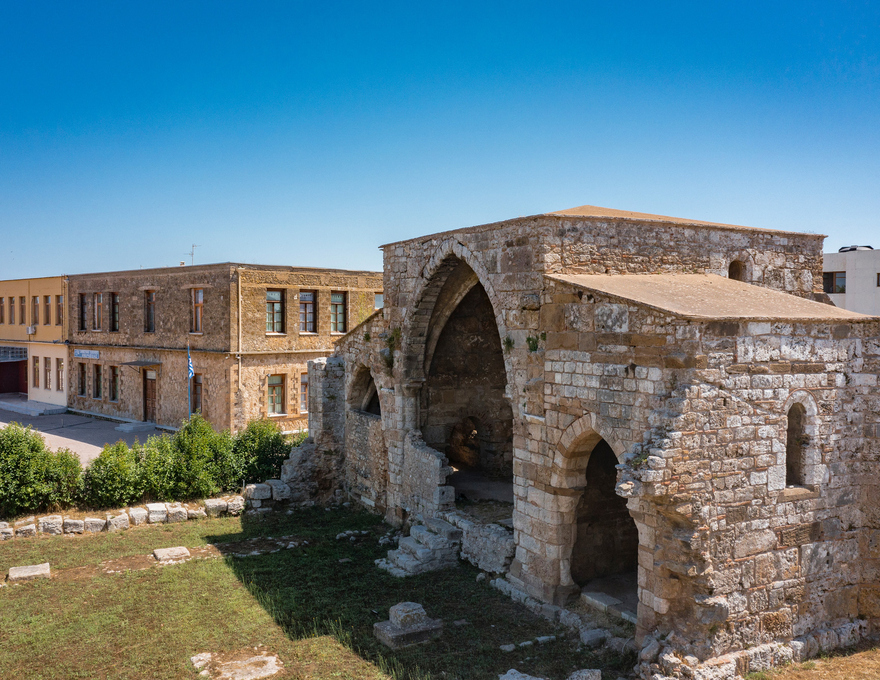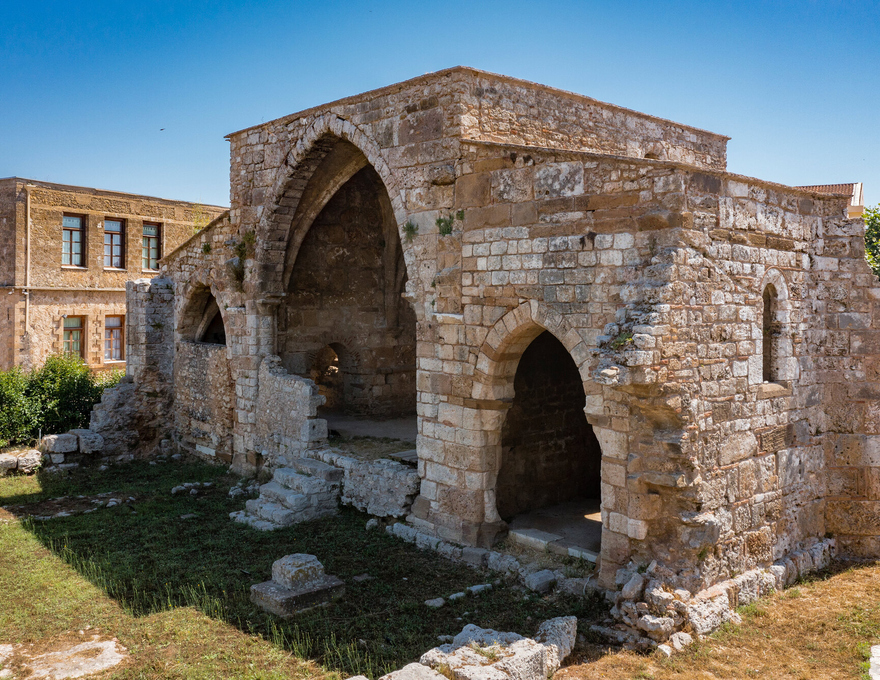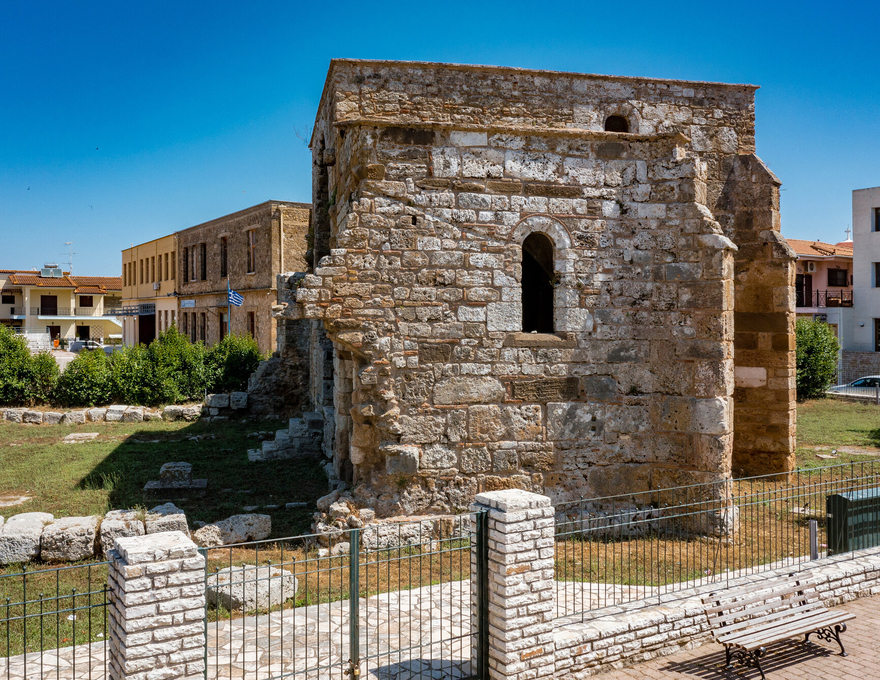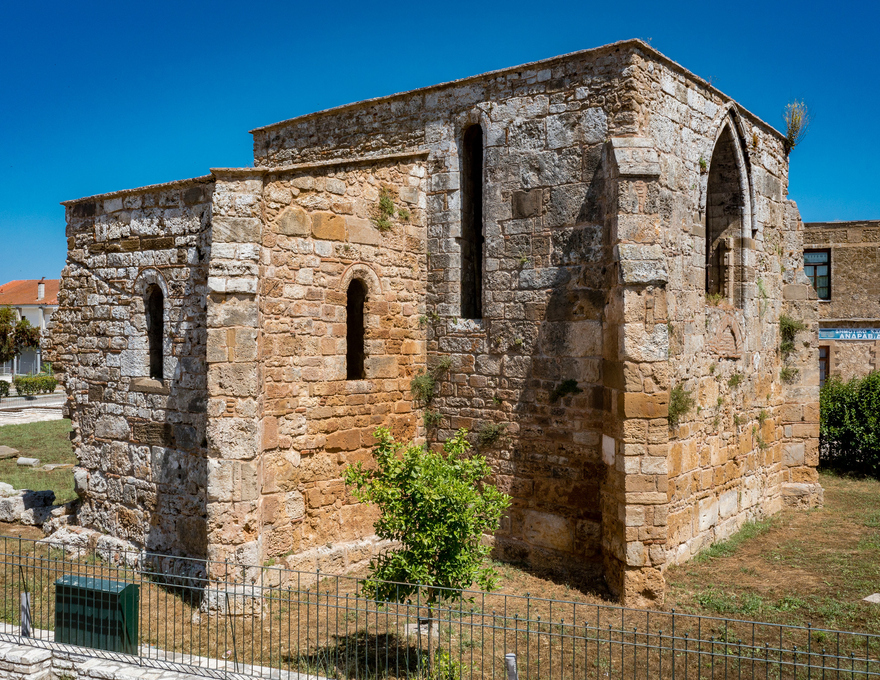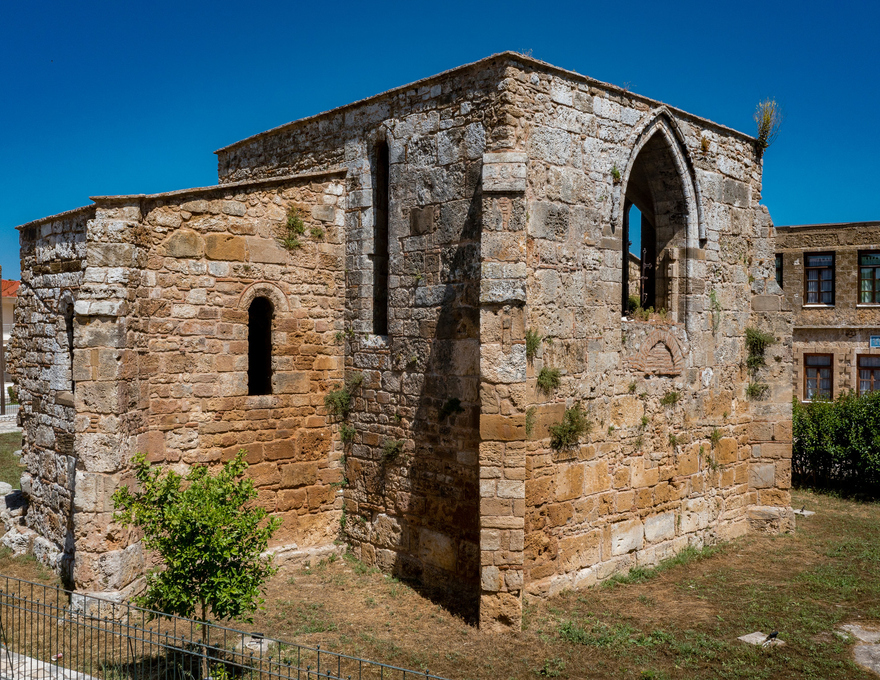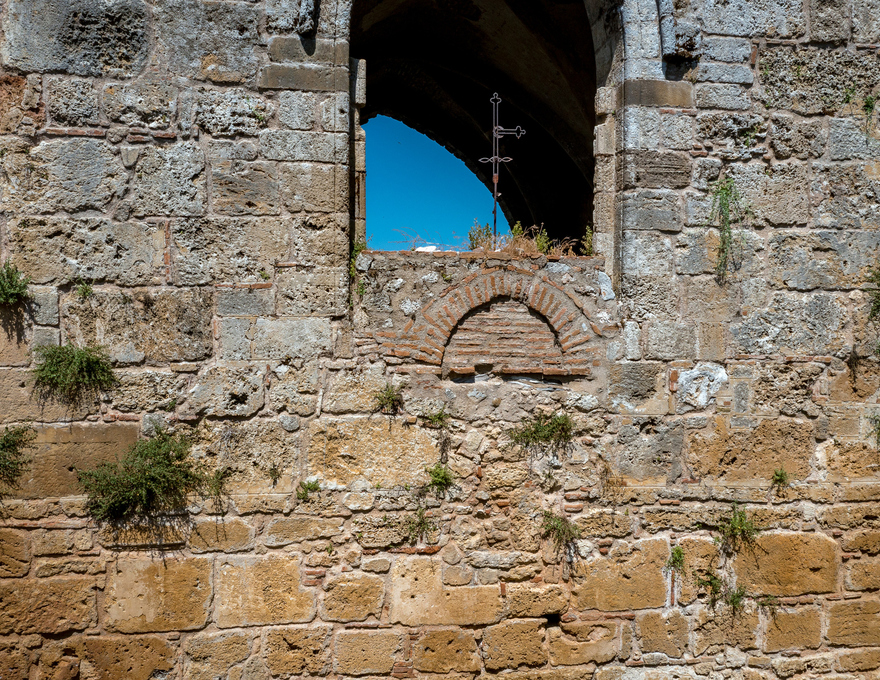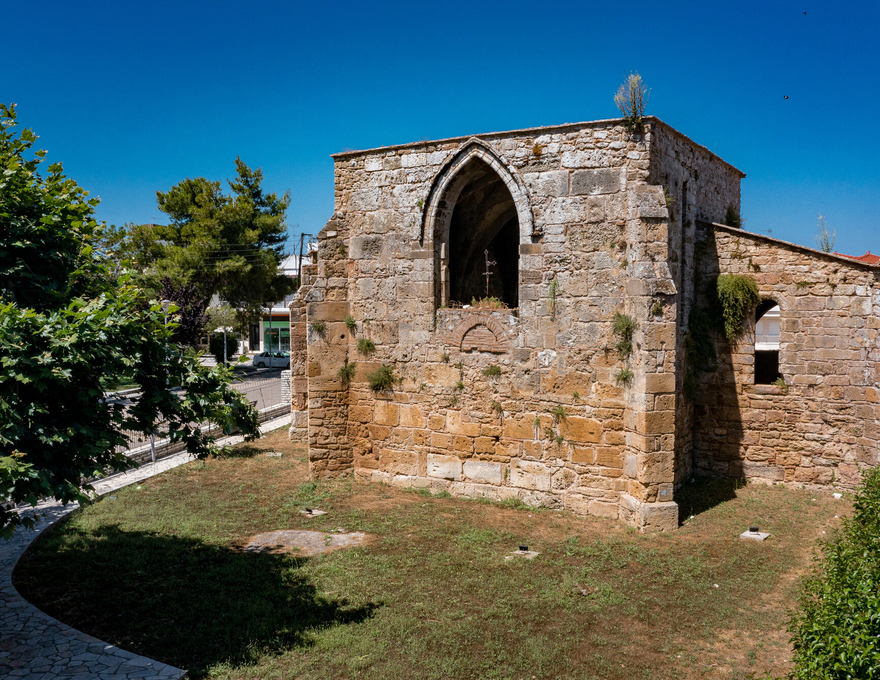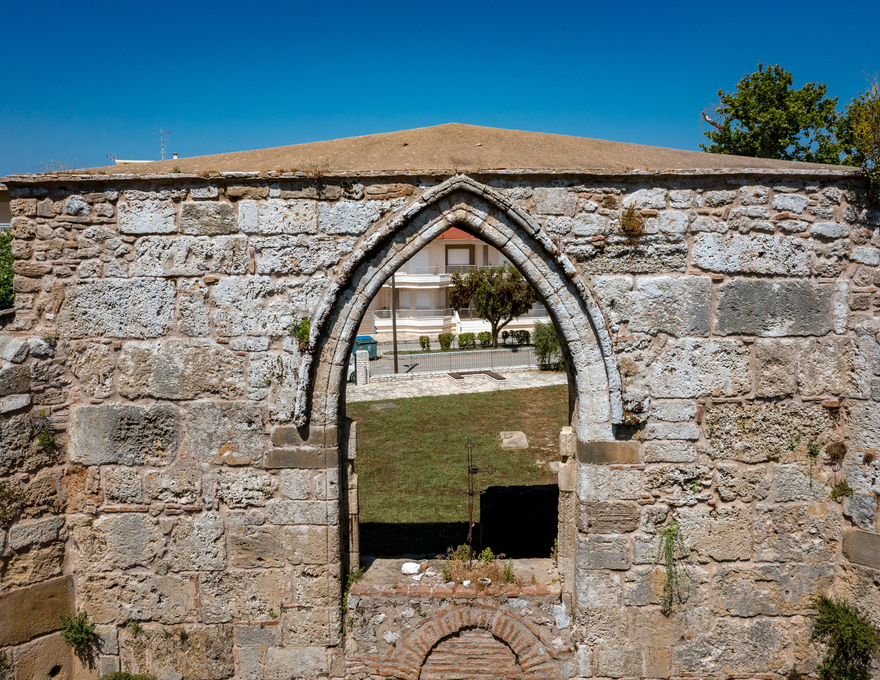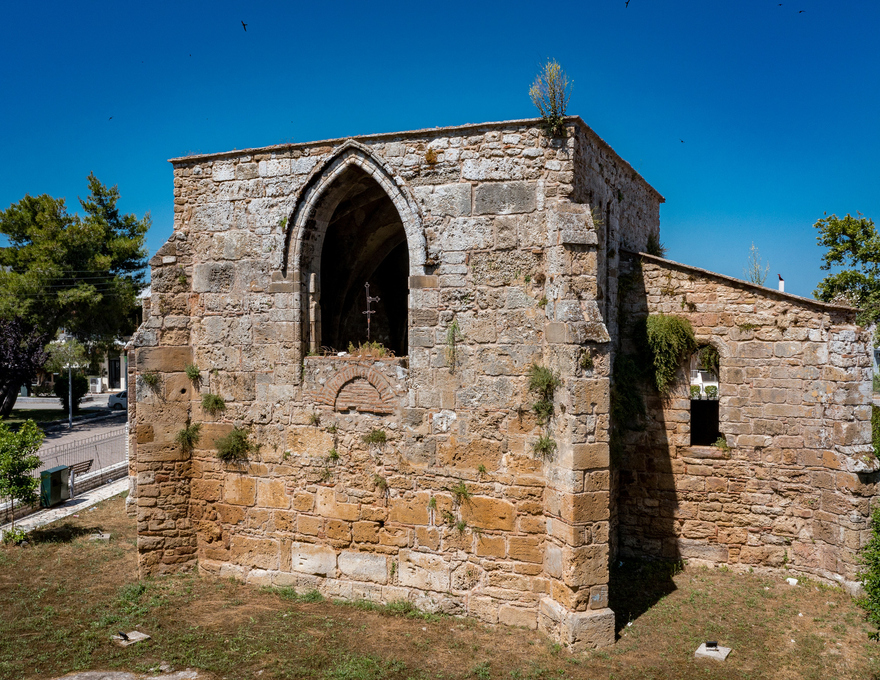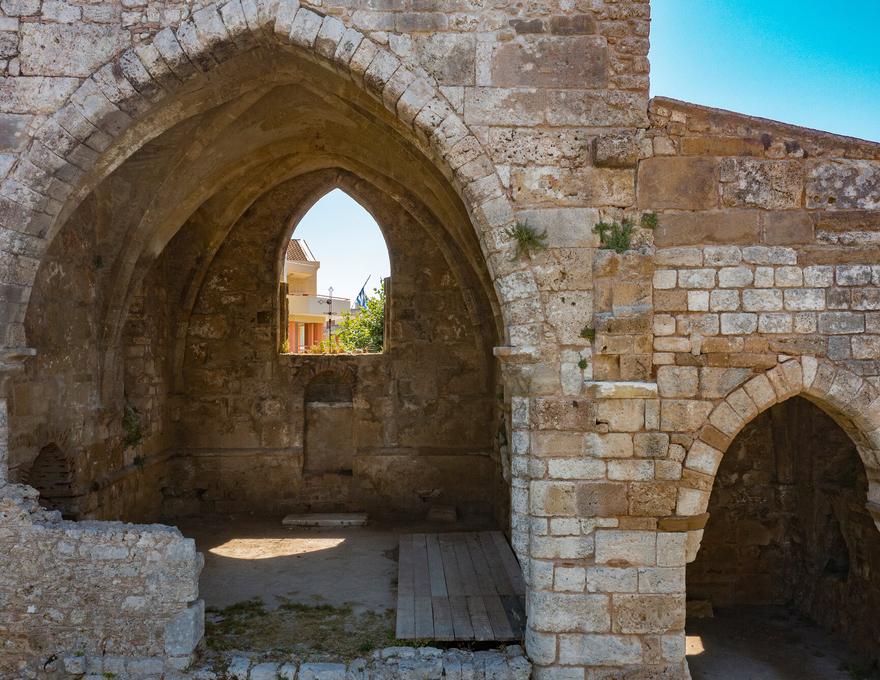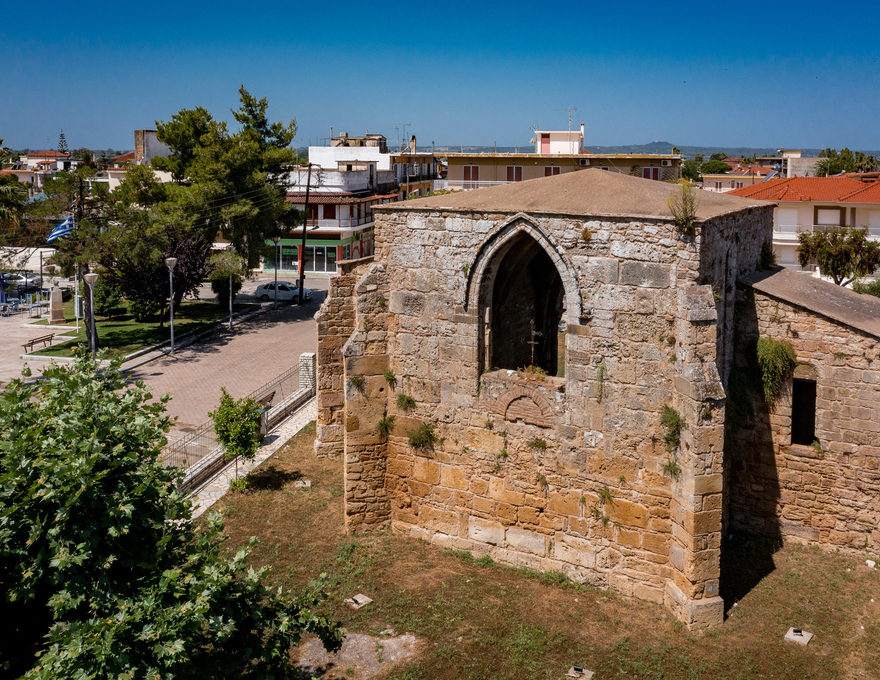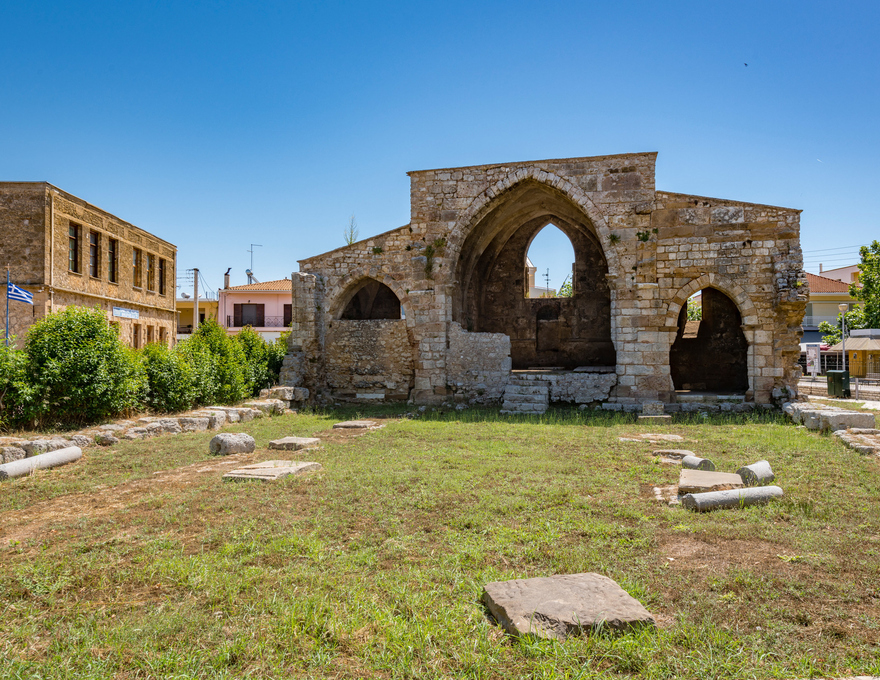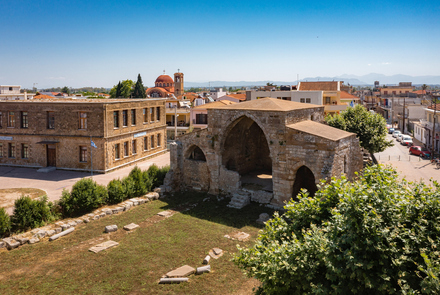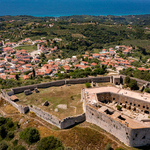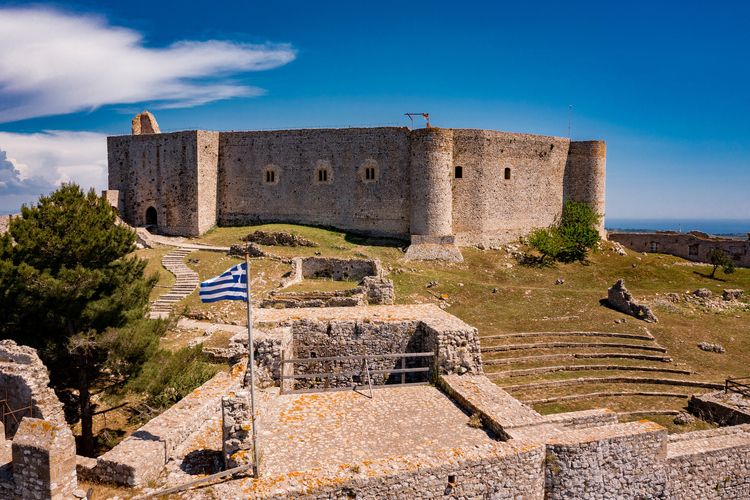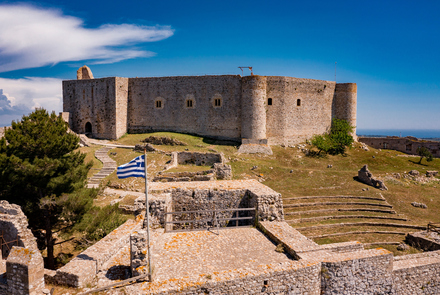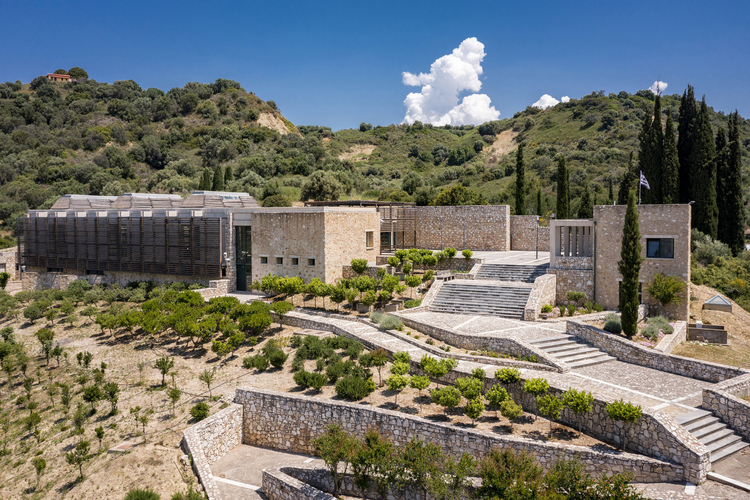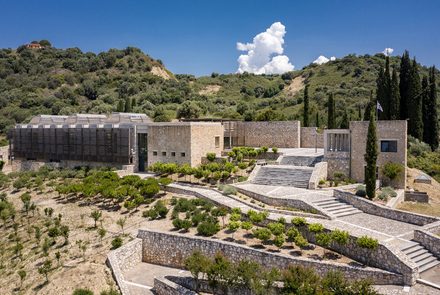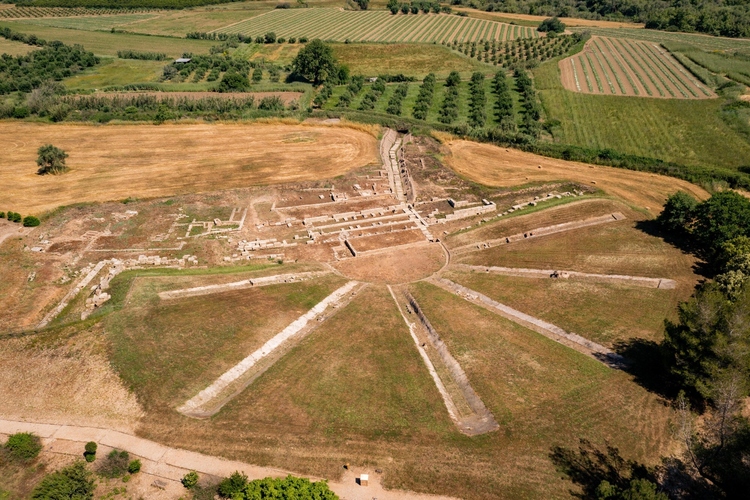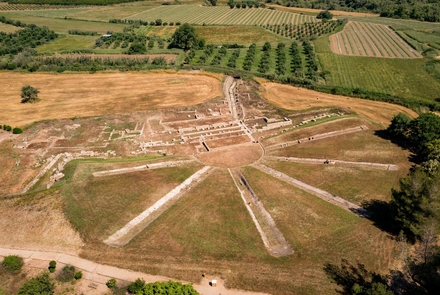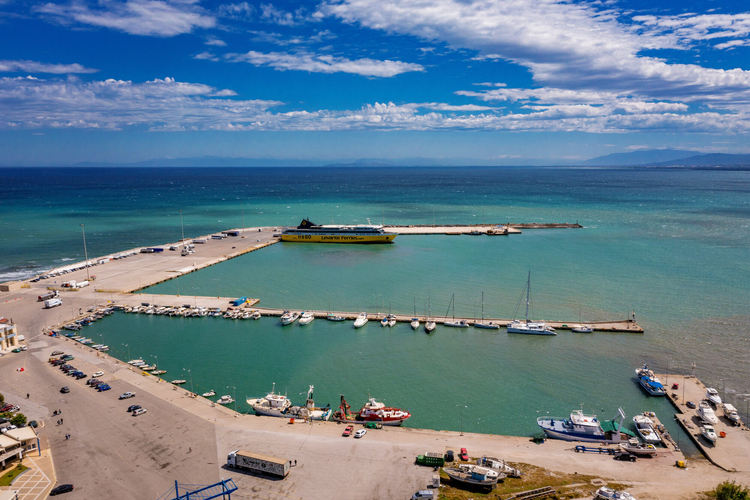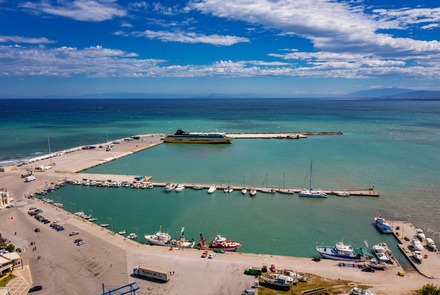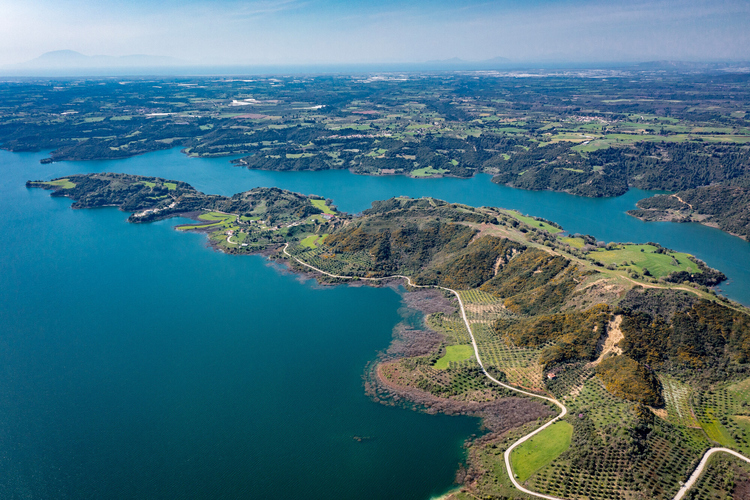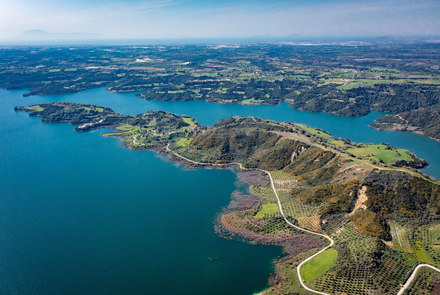Hagia Sofia of Andravida
The Gothic church of Hagia (Saint) Sophia is located in the center of Andravida, being the only visible remnant of the city that was once the medieval capital of the Principality of Achaia. In the "Chronicle of Morea" it is mentioned that Hagia Sophia is one of the three Gothic churches that the Franks built in the city. From the other two, St. Stephen and St. James, the burial chapel of the Villehardouins, no traces are preserved today.
The order of Dominican monks founds the church of Hagia Sophia in the first half of the 13th c. The church, a large three-aisled timber-roofed basilica with an original length of more than 45m, served as the court church of the Villehardouins, as the cathedral seat of the Latin bishop of Olena, as a place where convened the High Court, the council of the prince with the main responsibility of conferment of high justice and where important social events took place.
Today, only the bema, the two square chapels to the right and left of the bema are covered by ribbed cross vaults and the foundation of the side walls and arcades are preserved from the church. For the masonry, large poros stones were used as well as older byzantine sculptures. Western type windows pierce the walls of the apse and the chapels, while conchs are formed in the south wall of the sanctuary and the south chapel.
The surviving architectural elements of the church (ribbed cross vaults, column capitals with floral decoration, corbels, external radially arranged buttresses) attest to the strong Gothic influences of its construction. The building of the church seems to have been carried out in different periods; possibly the northern chapel and the corresponding aisle belong to a later construction.
After the fall of the Frankish rule, Hagia Sophia reportedly served as an Orthodox church, while according to tradition, unsuccessful attempts were made to convert it into a mosque during the Ottoman rule. A small Orthodox church served in the extant remains of the Gothic church and during the modern years after the independence of the Greek state.
Two important sculptures come from the area of Andravida, which are currently housed in the Chlemoutsi Castle museum. This is the marble tombstone of princess Anna Villehardouin, daughter of the Byzantine ruler of Epirus Michael II Angelos Doukas Komnenos, third and last wife of William II Villehardouin (1286) and a column capital bearing in relief the coat of arms of the princely couple Isabella Villehardouin - Florent de Hainaut (1289 – 1297).
Copyediting: Ephorate of Antiquities of Ilia
- Andravida, Ilia
- 2624022529 (Ephorate of Antiquities of Ilia)
- Construction period : First half of the 13th century AD
- Police Department of Elis - P.D. of Andravida - Kyllini - Ephorate of Antiquities of Ilia
No working hours

